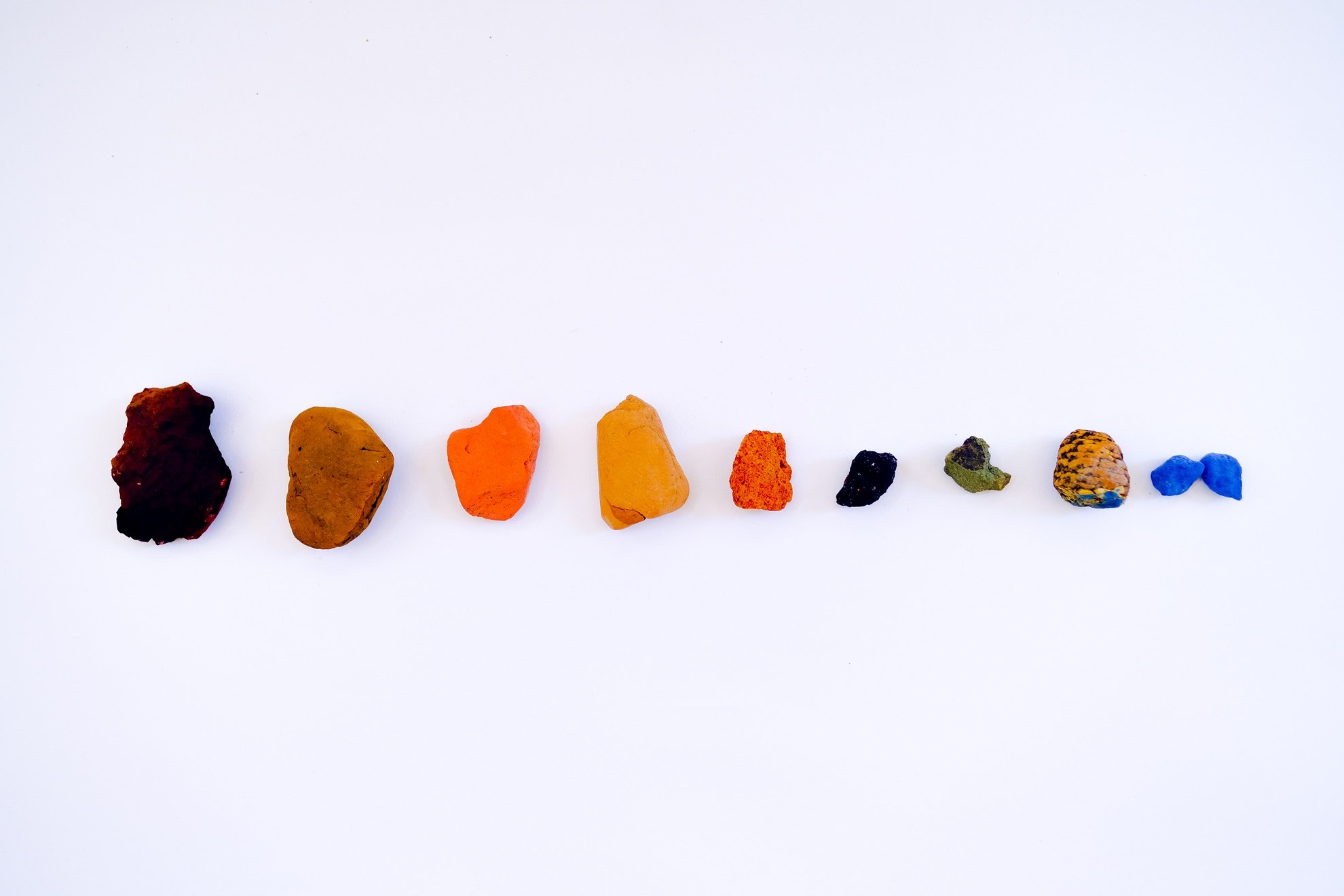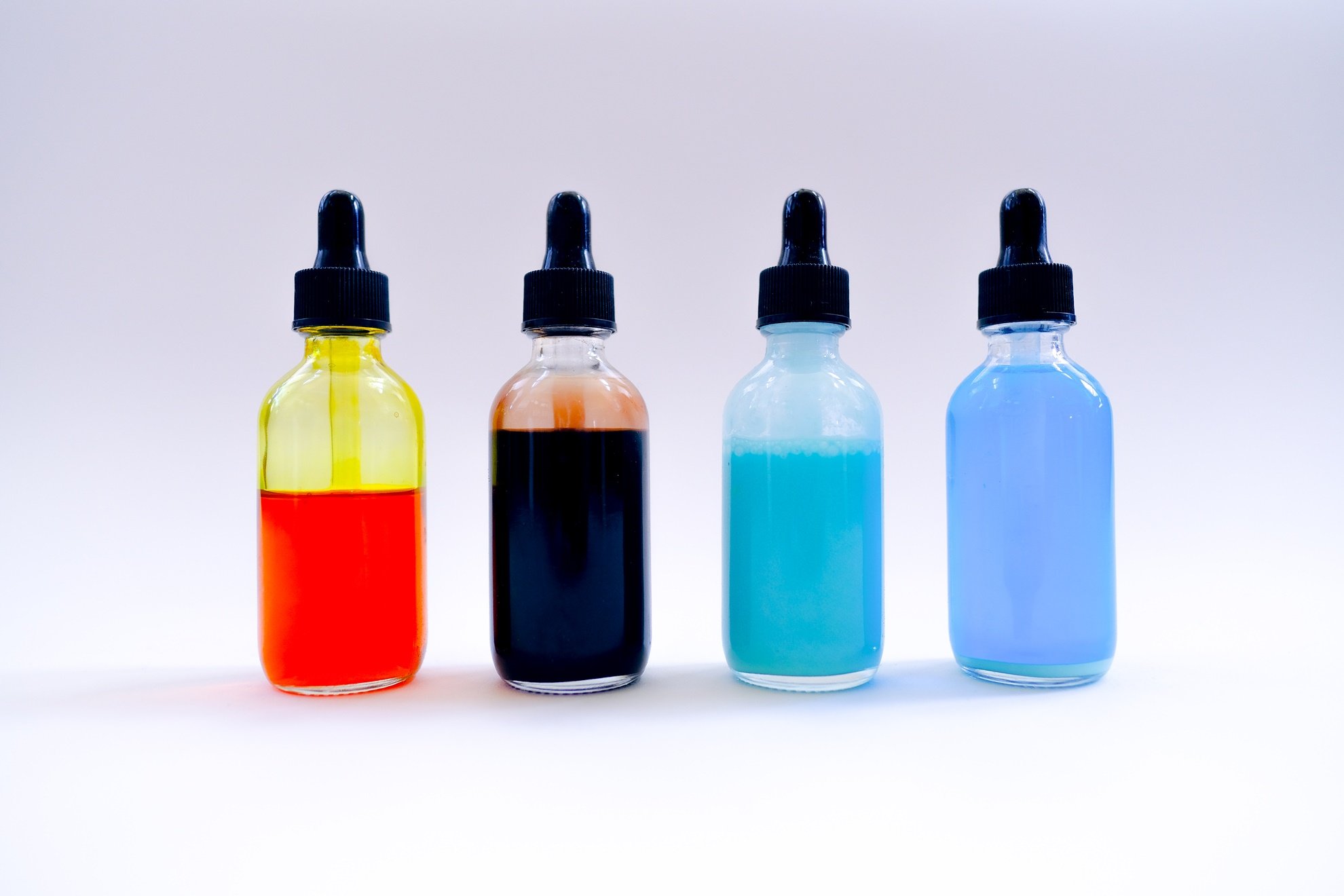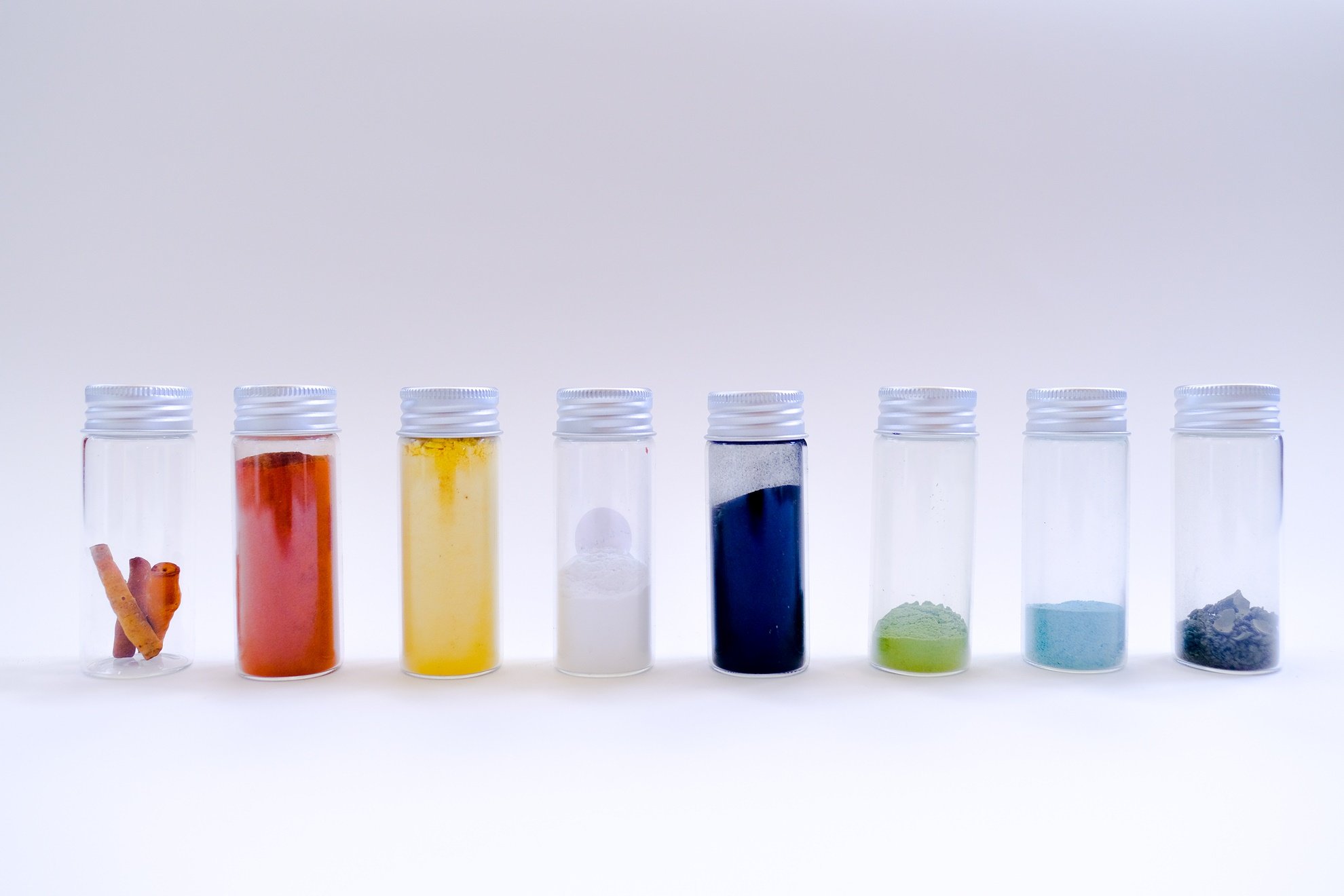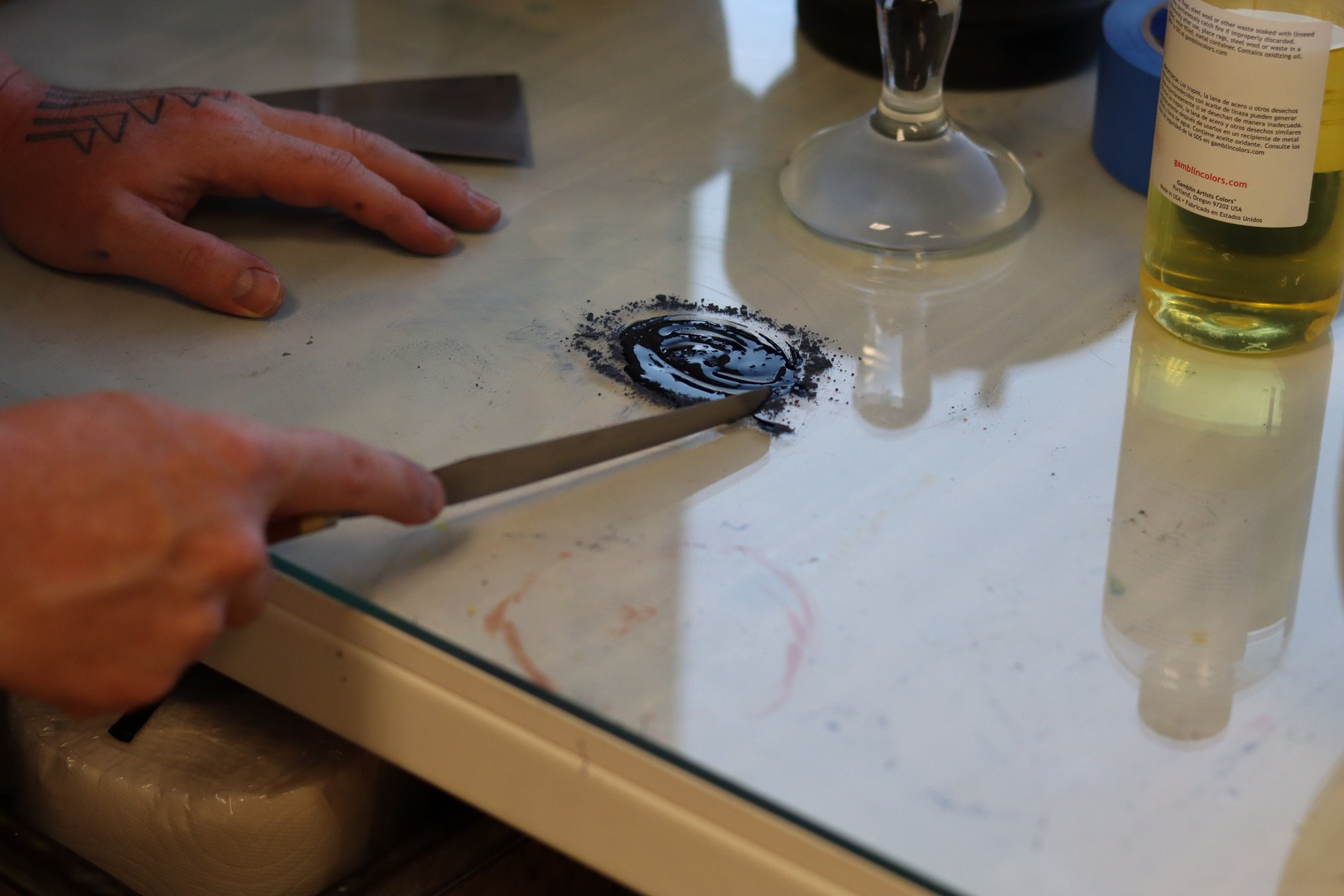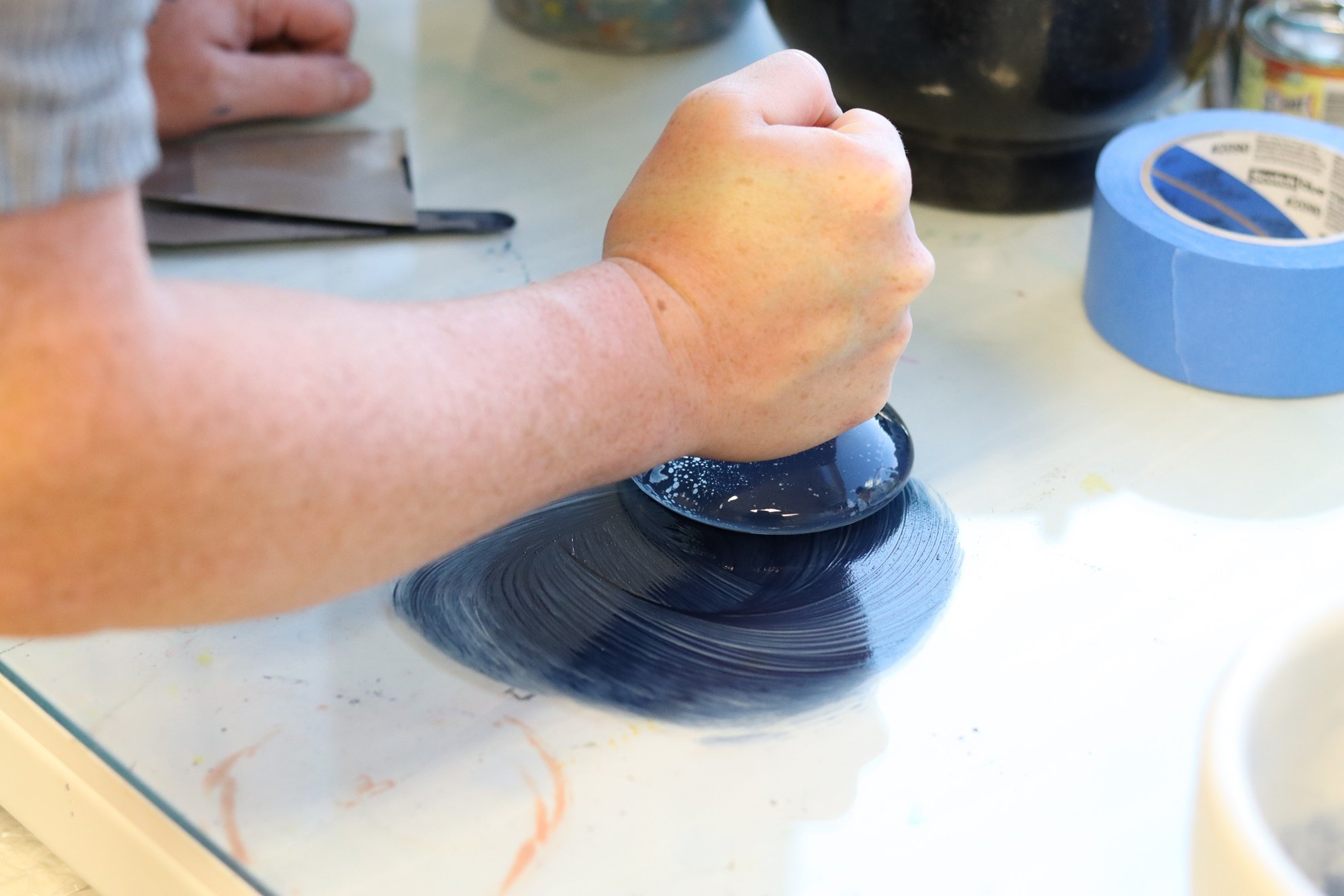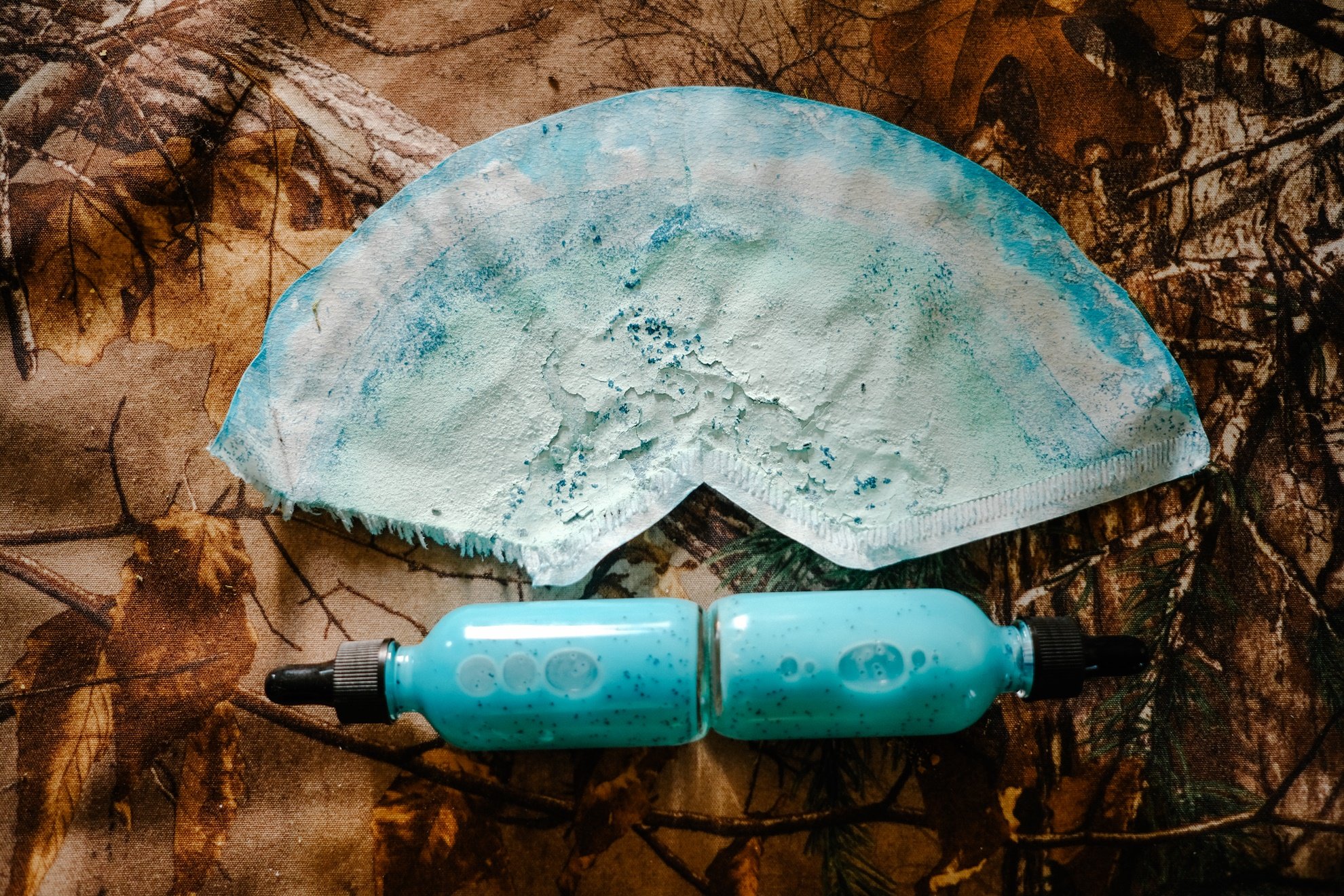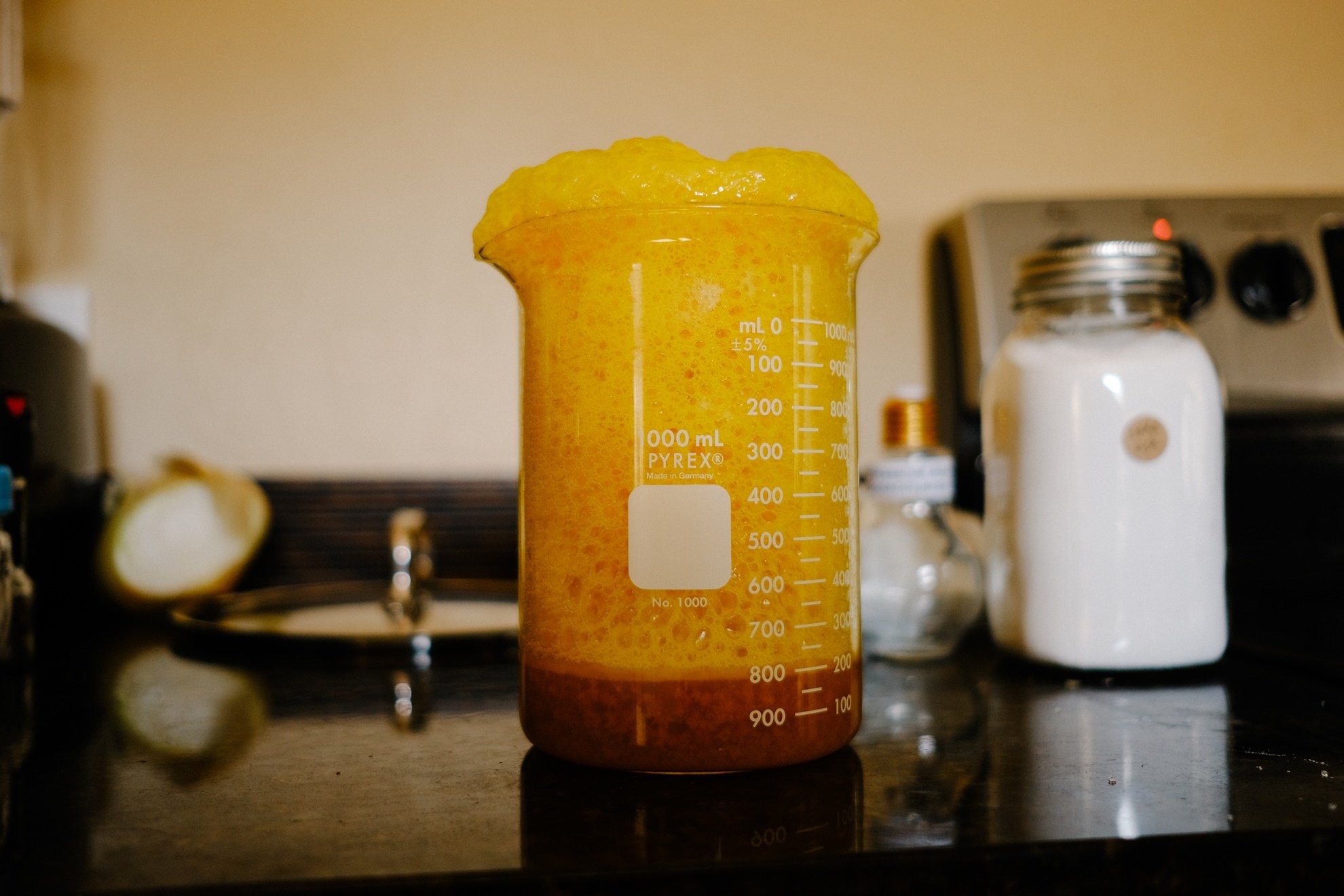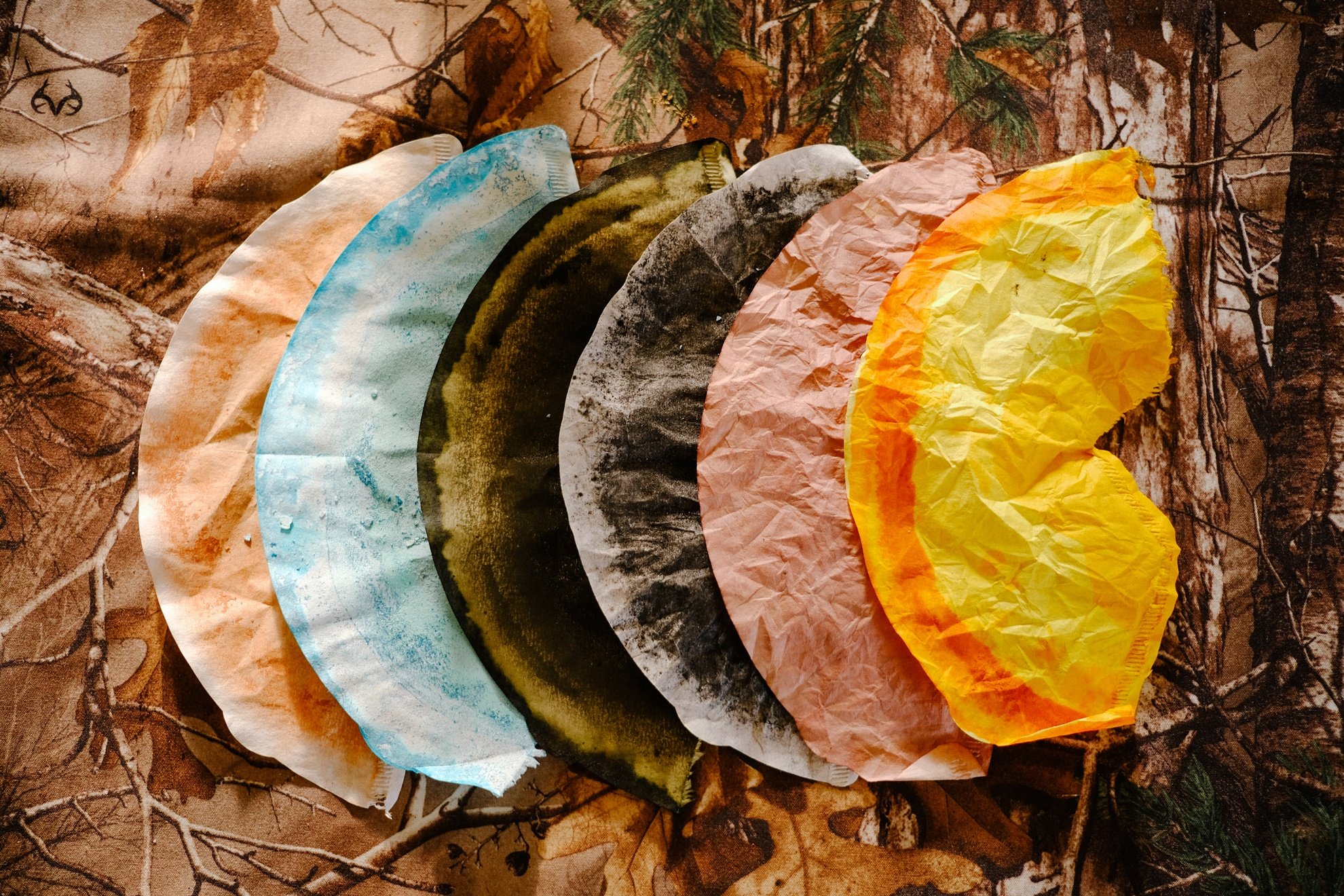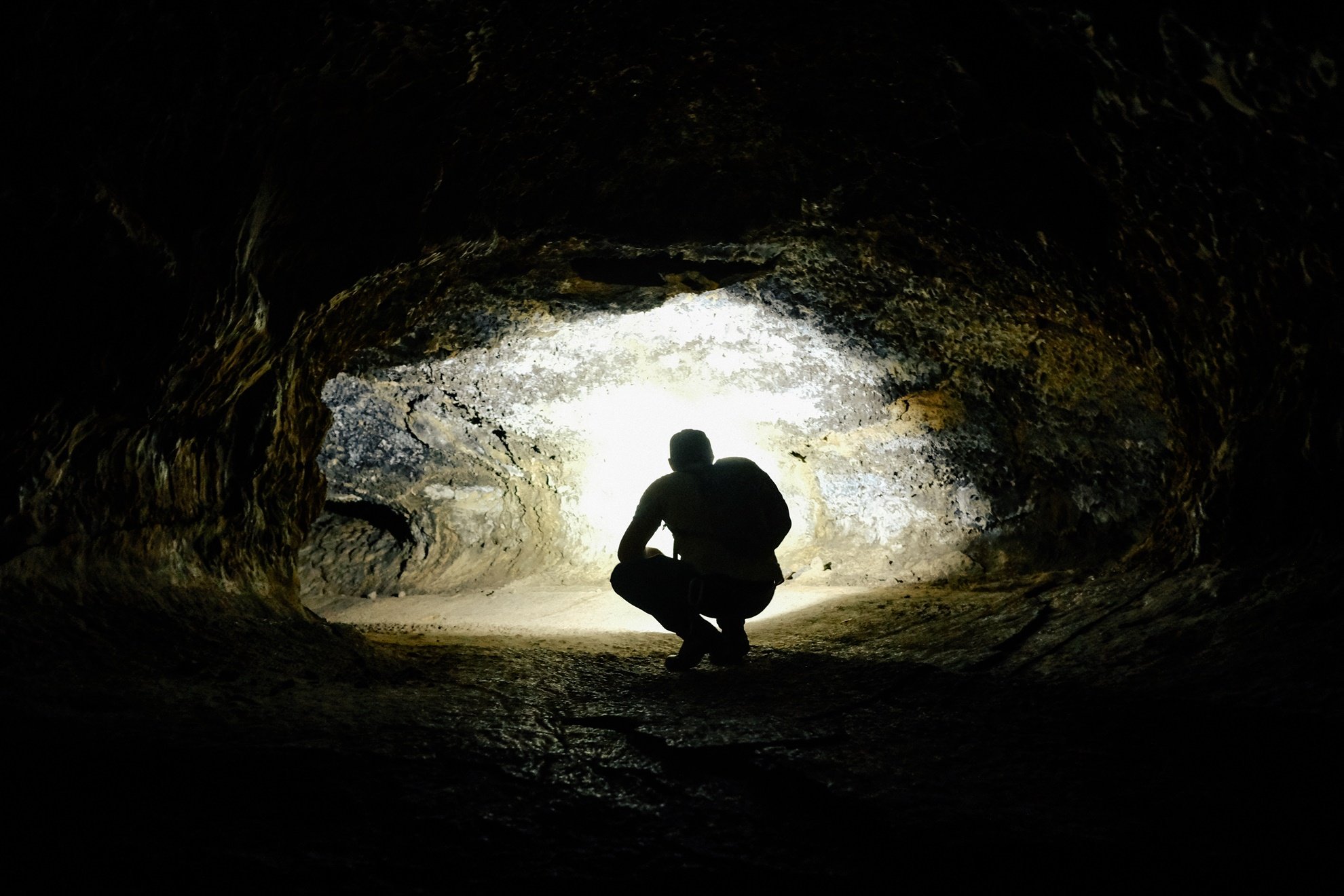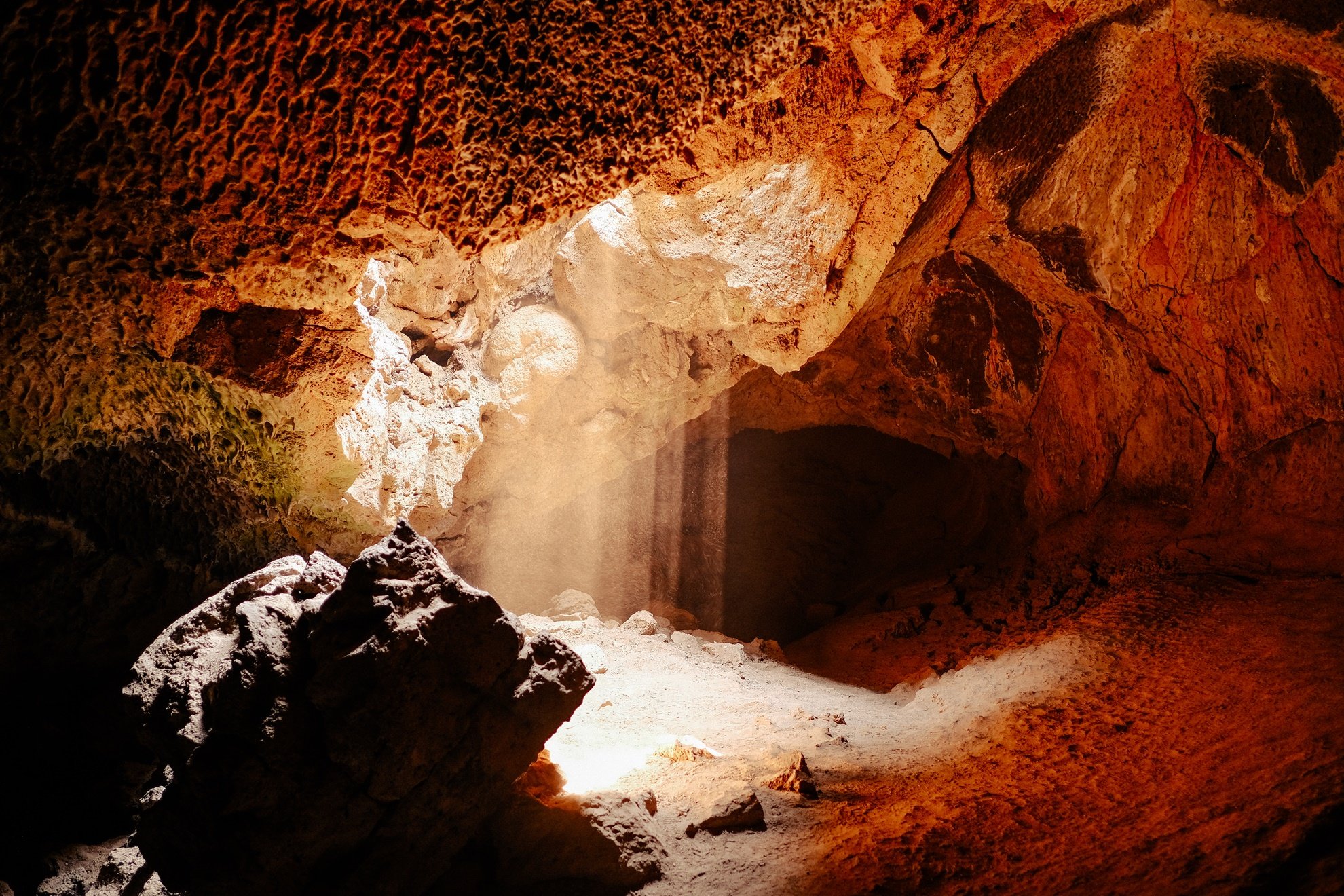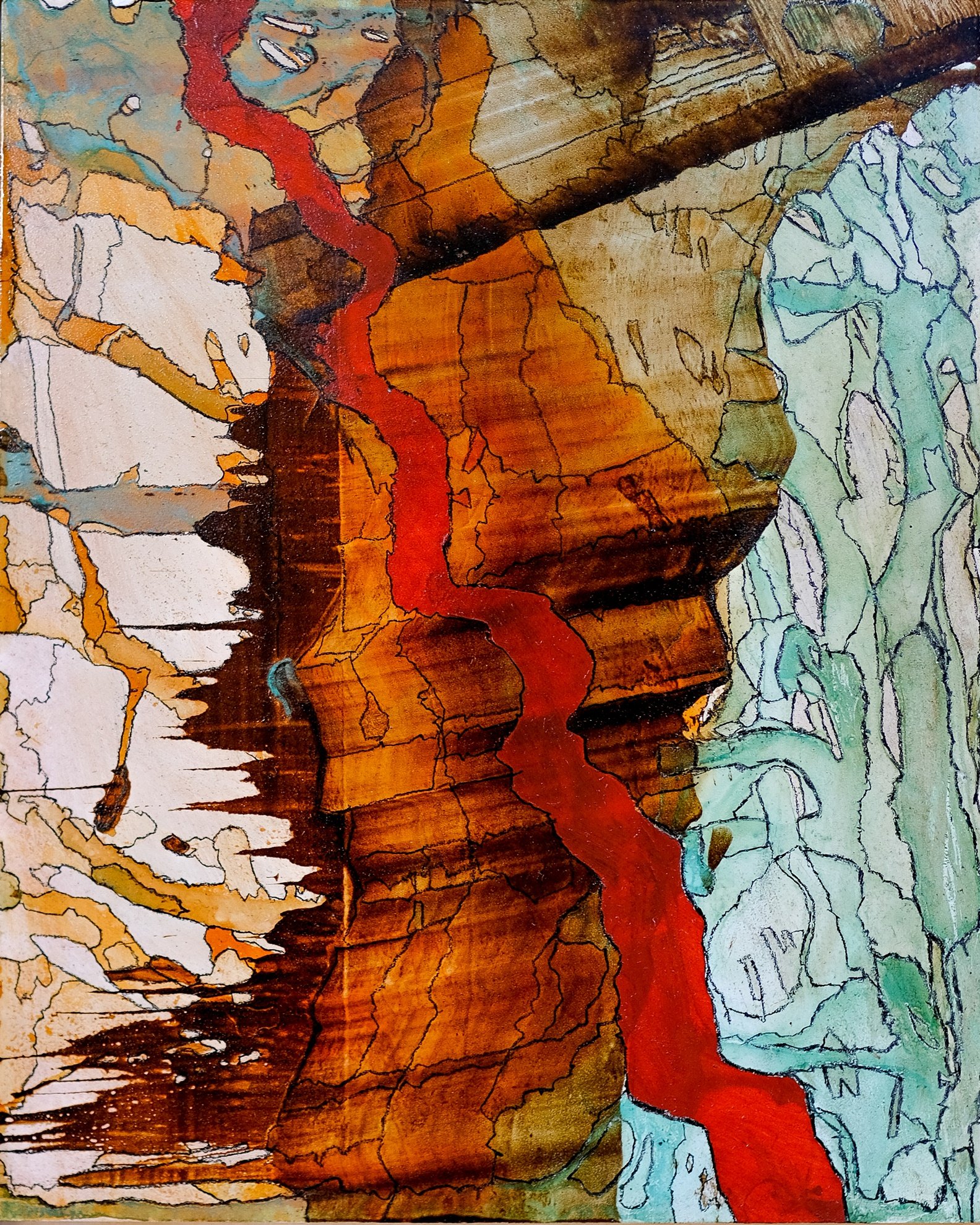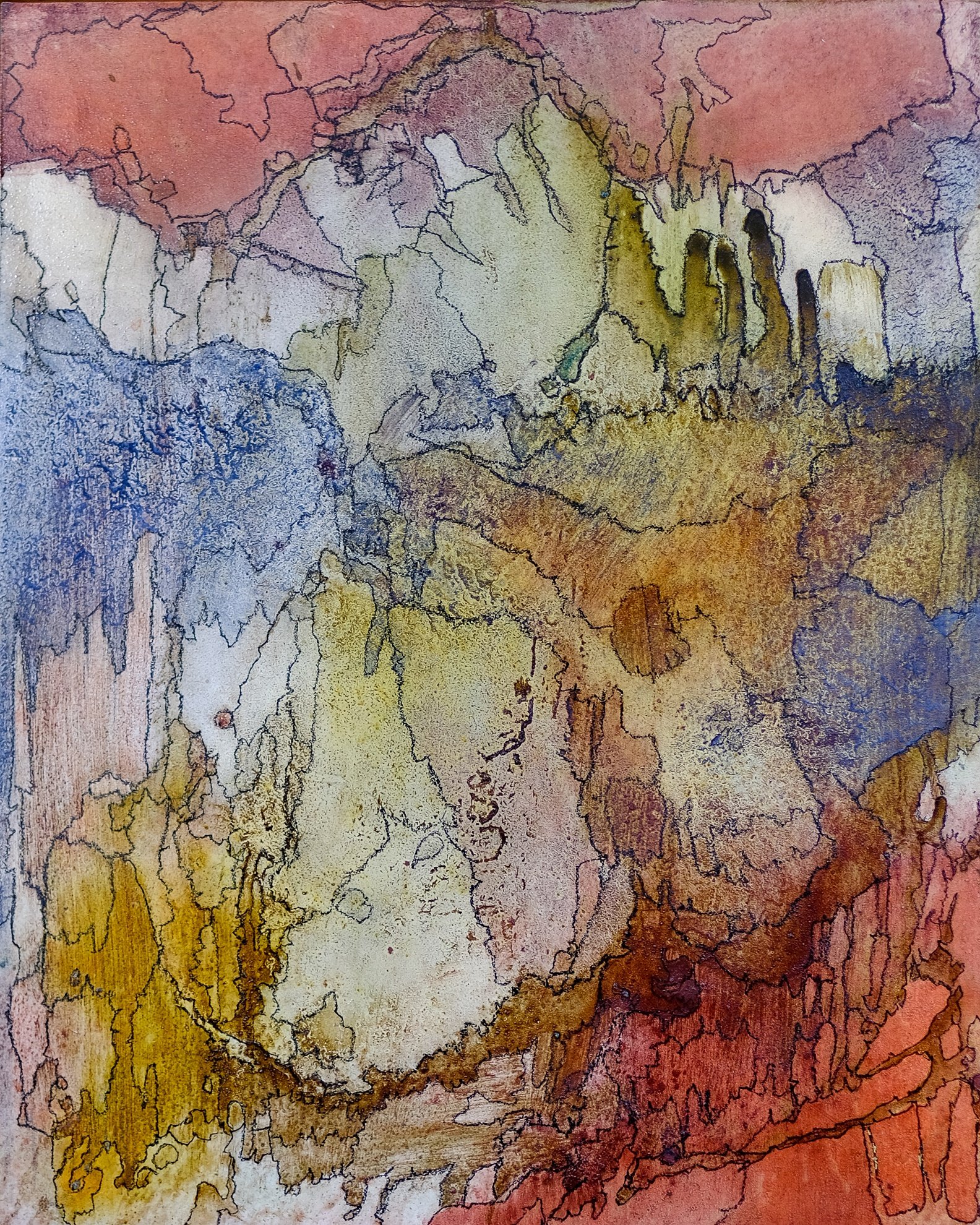Video by Evan James Benally Atwood Music by DJ Béeso (Kino Benally)
Photos by Evan James Benally Atwood and Katherine Paul
Pigments, plants, stones, and earth. These photos show some of the process I use to make the paints and inks in my landscapes. Each color found within my tribal homeland. Giiwas Lal’il’ilaqs?am Moqmoqli (Crater Lake elderberry dark purple), mbosaksawaas taktakli (Chiloquin/flint place red) brick and ochre, balbali (white) Collier park diatomite, kawkawli (brown) Link River, bosbosli (black) from the bootleg fire and ash from the dugout canoes, woyGanks (green) Agency Lake nettles, gekgekli (yellow) wolf moss, mecmecli (blue) train yard copper oxide and vivianite ochre.
My tribe has lived in the Klamath Basin since time immemorial where we have continued a long history of working with plant pigments and colors in our art and cultural practices. You can see accents in our baskets dyed with the dark muds from the marshlands. The bright yellows of wolf moss dyed porcupine quills in our basketry and regalia. The high desert waters contain clay and stone that carry various colors of pigment, and the eroded hillsides contain layers of color inside them. The Klamath Land Pigment Project is an ongoing creative exploration of my ancestral homelands, our traditions, and the potential for working with natural pigments in nontraditional modes of expression.
Gmukamps medicine cave, Klamath Land Pigments, Ink, and Lake Pigment on 8”x10”x1” wood panel (2022)
ni goge domnat (I can hear the river), Klamath Land Pigments, Ink, and Lake Pigment on 8”x10”x1” wood panel (2022)
dina ni wonam newisht sleta (once I found the remains of an elk), Klamath Land Pigments, Ink, and Lake Pigment on 8”x10”x1” wood panel (2022)
ni slewqis domna (I hear the wind), Klamath Land Pigments, Ink, and Lake Pigment on 8”x10”x1” wood panel (2022)
ni maksa embli (I am carrying a basket), Klamath Land Pigments, Ink, and Lake Pigment on 8”x10”x1” wood panel (2022)
peyala (give birth to a daughter), Klamath Land Pigments, Ink, and Lake Pigment on 8”x10”x1” wood panel (2022)
Where the c’waam and koptu hide, Klamath Land Pigments, Ink, and Lake Pigment on 8”x10”x1” wood panel (2022)
mecmecli like ambo (blue like water), Klamath Land Pigments, Ink, and Lake Pigment on 8”x10”x1” wood panel (2022)
Follow the Sprague River to find the red ochre, Klamath Land Pigments, Ink, and Lake Pigment on 8”x10”x1” wood panel (2022)
mbosant ni mi lacasdat lilhanks pawapka (tomorrow I will eat deer at your house), Klamath Land Pigments, Ink, and Lake Pigment on 8”x10”x1” wood panel (2022)
ochre gankanga (ochre hunt), Klamath Land Pigments, Ink, and Lake Pigment on 8”x10”x1” wood panel (2022)
kani yana sle-a? (who sees the mountain?), Klamath Land Pigments, Ink, and Lake Pigment on 8”x10”x1” wood panel (2022)
The Klamath Land Pigment Project was supported by Native Arts and Cultures Foundation (NACF) LIFT: Early Career Support for Native Artists award.
To find out more about natural pigments please visit: www.pigmentsrevealed.com
To donate or learn more about Native Arts and Cultures Foundation please visit: www.nativeartsandcultures.org

